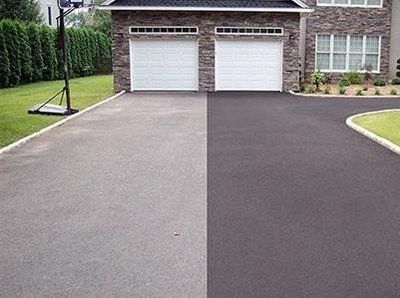Hot Mix Asphalt: A Sustainable Solution for Sidewalk
Warm Mix Asphalt (HMA) has arised as a leading lasting selection for sidewalk options, using a myriad of innovative technologies and ecological advantages. Its capacity to decrease and reuse products energy consumption presents an engaging situation for its adoption in road building tasks. Furthermore, the long-lasting performance and resilience of HMA make it a preferred option for facilities advancement. As the need for eco-friendly building and construction techniques grows, exploring the nuances of HMA's sustainability can provide beneficial understandings into the future of sidewalk services.
Ecological Benefits of Hot Mix Asphalt

Moreover, Warm Mix Asphalt helps to minimize urban warmth island effects. Its dark shade soaks up sunlight, lowering the amount of warm mirrored back right into the environment compared to lighter-colored pavements. This can decrease ambient temperatures in metropolitan locations, decreasing the need for air conditioning and ultimately decreasing power consumption.
On top of that, Warm Mix Asphalt contributes to improved stormwater administration. Its permeable nature permits water to recharge and infiltrate the pavement groundwater materials, minimizing drainage and the threat of flooding. These ecological benefits make Warm Mix Asphalt a sustainable choice for paving roadways and freeways.
Power Efficiency in HMA Production
Is power efficiency an essential variable in the production of Hot Mix Asphalt (HMA)? Energy plays a substantial role in the manufacturing of HMA, affecting both cost and ecological sustainability. One crucial aspect of energy effectiveness in HMA manufacturing is the use of warm mix asphalt (WMA) modern technologies.
Additionally, innovations in plant innovations have led to more energy-efficient HMA manufacturing processes. By maximizing power use in HMA production, the market can lower its carbon footprint while preserving high-grade pavement materials.
Recyclability of Warm Mix Asphalt
The recyclability of Warm Mix Asphalt (HMA) is a critical element of its sustainability and lasting ecological effect. HMA is among the most recycled materials in the United States, with over 100 million lots of redeemed asphalt pavement (RAP) being reused each year in new pavement building. Recycling HMA supplies numerous environmental benefits, such as minimizing the demand for virgin products, lowering power usage throughout manufacturing, and lowering the amount of waste sent to garbage dumps.
The process of recycling HMA includes grating the existing pavement, squashing it right into smaller items, and blending it with brand-new accumulation and asphalt binder to develop a recycled mix. In general, the recyclability of HMA plays a substantial duty in advertising sustainable methods within the pavement industry.

Long-Term Efficiency of HMA
Asphalt sidewalks show durability and resilience over a prolonged period, showing the long-lasting efficiency of Hot Mix Asphalt (HMA) The longevity of HMA can be credited to its capacity to endure heavy web traffic tons, extreme weather, and the impacts of aging. Research studies have shown that well-designed and correctly constructed HMA pavements can last for 20 years or even more with normal upkeep. The secret to maximizing the lasting performance of HMA depends on utilizing top notch materials, complying with ideal techniques in building, and implementing efficient upkeep methods. Proper water drainage, routine assessments, and prompt repair work are vital for preserving the structural honesty of HMA pavements in time. Additionally, innovations in HMA innovation, such as using polymer-modified binders commercial parking lot paving and cozy mix asphalt, have actually further improved the durability and long life of HMA pavements. By focusing on quality building and construction and maintenance methods, HMA proceeds to confirm itself as a lasting and cost-effective option for lasting sidewalk infrastructure.

HMA: Toughness and Sustainability
Demonstrating both resilience and sustainability, Warm Mix Asphalt (HMA) has actually ended up being a cornerstone in the building of lasting sidewalk facilities - hot mix asphalt. HMA's toughness stems from its capacity to endure hefty tons, rough climate condition, and high web traffic quantities, making it a reputable choice for streets, freeways, and airport paths. The composition of HMA, which normally consists of aggregates, binder, and filler, plays a crucial function in boosting its durability and resistance to tear and wear
Furthermore, HMA's sustainability lies in its recyclability and energy-efficient production procedure. The capacity to reuse recovered asphalt sidewalk (RAP) in brand-new HMA mixtures decreases the need for virgin materials and reduces the ecological influence of pavement building and upkeep. In addition, the energy effectiveness of generating HMA depends on its reduced mixing temperature levels compared to other pavement materials, bring about decreased energy usage and greenhouse gas exhausts.
Verdict
In final thought, hot mix asphalt (HMA) supplies a lasting service for pavement with its environmentally pleasant attributes. HMA's recyclability, power effectiveness in production, and lasting longevity make it a green option for road building and construction.
HMA is one of the most recycled products in the United States, with over 100 million lots of reclaimed asphalt sidewalk (RAP) being reused yearly in brand-new pavement construction.The procedure of recycling HMA entails grating the existing sidewalk, squashing it into smaller sized pieces, and blending it with new accumulation and asphalt binder to create a recycled mix.Asphalt sidewalks demonstrate durability and durability over an extended duration, reflecting the long-lasting performance of Hot Mix Asphalt (HMA) In addition, improvements in HMA technology, such as the usage of polymer-modified binders and cozy mix asphalt, have better enhanced the longevity and longevity of HMA sidewalks. The ability to reuse redeemed asphalt pavement (RAP) in new HMA mixes minimizes the need for virgin materials and decreases the environmental impact of sidewalk building and construction and maintenance.